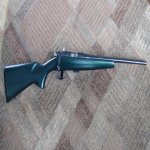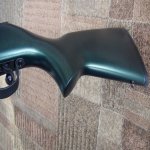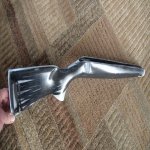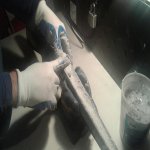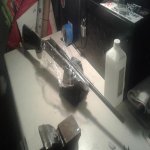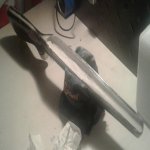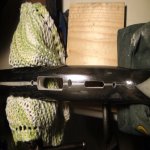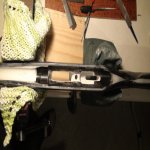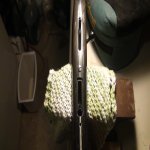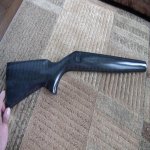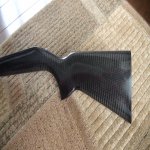Last fall I decided to go ahead with a project to make a lightweight carbon fibre stock for our CZ452 Scout. The factory beech stock is fine as long as the kids can rest the rifle on bags or a bi-pod. However, they have a hard time shooting it off hand because it is too heavy. I also wanted to lengthen the stock by about 1 inch so I would have the option to use the Scout for hunting without a slip-on recoil pad and have a neat lightweight and accurate "survival 22". Another requirement for the project was the ability to use the stock for other 452s and possibly 455s.
I have completed the first prototype build and have some pictures to share. My original plan was to build the first stock using fibreglass cloth instead of carbon fibre to evaluate the mold quality and layup technique, but I found some carbon fibre unidirectional tow from previous projects so I incorporated it into the prototype skins.
At this point I believe the first prototype is overbuilt. It's like a tank, I think I could suspend it between 2 chairs and sit on it and it won’t break. The second stock I will be making in the next couple of days will be made of a lightweight carbon fibre fabric that I should receive tomorrow. The layup will be altered to a degree to incorporate a few things I learned while making this first prototype. It should come out lighter.
Here it is after being sanded down for the first application of filler and primer. I put it all together to check the overall weight and take some pictures. The action and a small portion of the barrel are epoxy bedded, the barrel is free floated and a (heavy) 5 oz. Pachmayr butt pad installed. The rifle cycles/feeds/ejects properly. I am at 4 lbs 1 oz. prior to primer/paint.
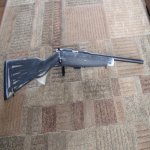
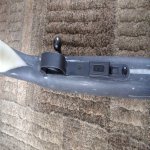
I have completed the first prototype build and have some pictures to share. My original plan was to build the first stock using fibreglass cloth instead of carbon fibre to evaluate the mold quality and layup technique, but I found some carbon fibre unidirectional tow from previous projects so I incorporated it into the prototype skins.
At this point I believe the first prototype is overbuilt. It's like a tank, I think I could suspend it between 2 chairs and sit on it and it won’t break. The second stock I will be making in the next couple of days will be made of a lightweight carbon fibre fabric that I should receive tomorrow. The layup will be altered to a degree to incorporate a few things I learned while making this first prototype. It should come out lighter.
Here it is after being sanded down for the first application of filler and primer. I put it all together to check the overall weight and take some pictures. The action and a small portion of the barrel are epoxy bedded, the barrel is free floated and a (heavy) 5 oz. Pachmayr butt pad installed. The rifle cycles/feeds/ejects properly. I am at 4 lbs 1 oz. prior to primer/paint.


Attachments
Last edited:


















































